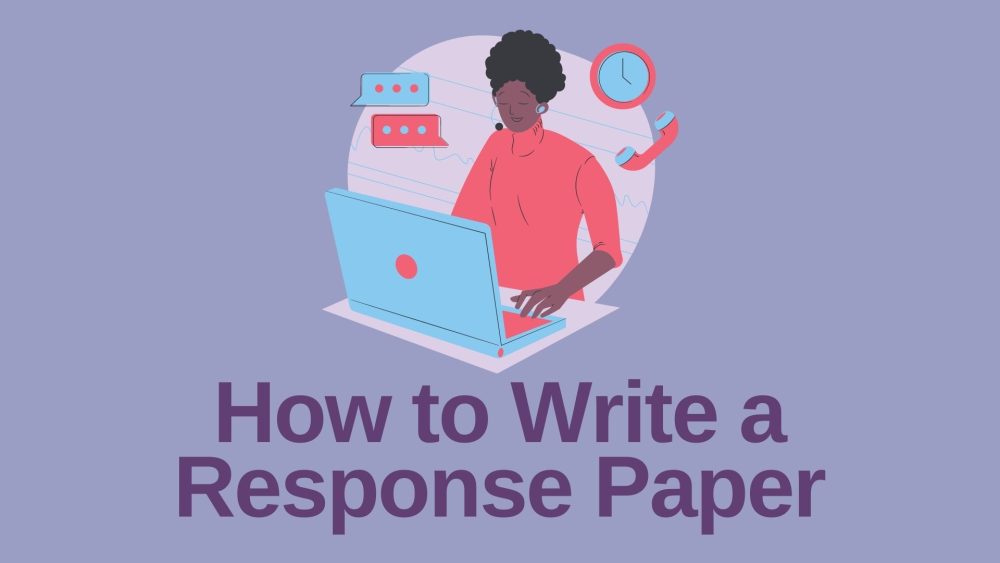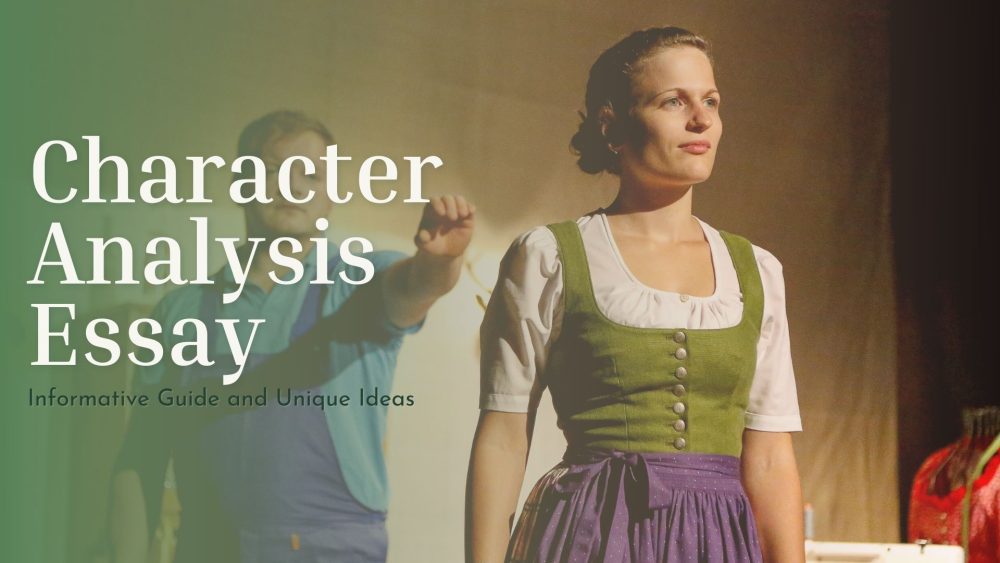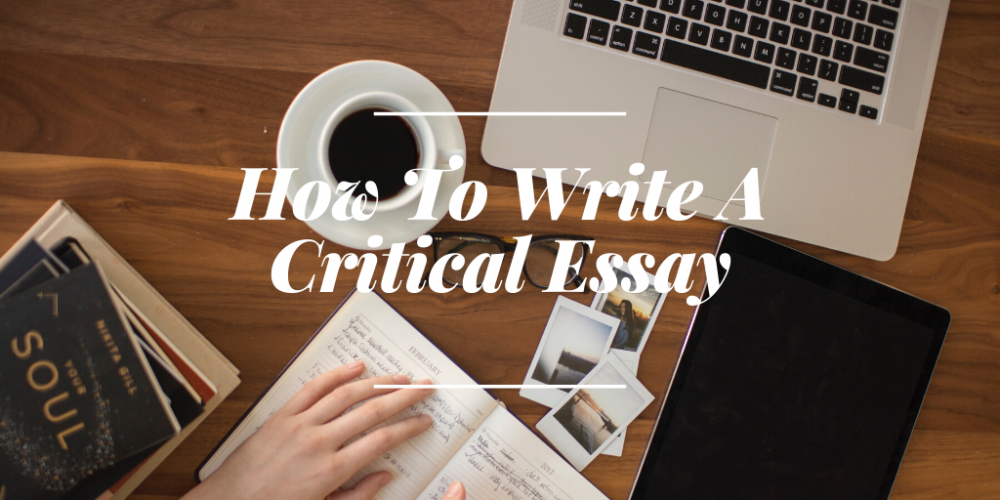Many students want to know how to write a response paper after their educators ask them to respond to a book, an article, a film, music, or an artistic masterpiece. In some cases, teachers require learners to respond to a marketing or promotional campaign in this paper. Unfortunately, not every learner has the necessary skills to write this essay and impress their teacher. This article explains what a response paper is and the best way to write it. It also includes tips and guides to help you write your paper quickly and score the top grade.
What is a Response Paper?
A response essay or paper is a writing assignment requiring learners to communicate and explain their viewpoints and understanding of a specific idea in writing. A student might write something relating to a research paper, an essay, a newspaper article, or a book they are discussing.
Many high school, college, and university students confuse a response or reaction paper with a formal review of an article, a book, a movie, or an event. When writing a review, you express your thoughts, personal opinion, and views about something you’ve studied and analyzed.
A reaction paper is different from a review because you speak your values, ideas, and visions in the work you’re responding to in the essay. Thus, you must connect your discussion subject with personal experience. For this reason, you must study the work to gain an in-depth understanding of its primary points. Also, you must be analytical and master critical thinking skills to provide a detailed, relevant, and satisfactory response.
In every response, the teacher expects you to approach the work in question as an artist. Thus, you must take time, think, and analyze the author’s original position before telling the audience what you’ve been through when studying it. The educator expects you to change the content of a book, an article, a movie, or a poem into a meaningful experience that the audience will relate to when reading your reaction paper.
What’s more, you write a reaction paper in the first person. For instance, your paper can include sentences with phrases like, “I liked how the author approaches the issue.” But a response or reaction paper is not a summary. Instead, this paper tells the audience deep thoughts about different concepts and what you’ve learned or understood from the work in question. Thus, this paper should be a profound letter in which you tell the author or artist about the part that inspired or influenced you the most.
Response Paper Format
A response or reaction paper is somewhat informal. However, your paper should have a structure similar to that of the other pieces of academic writing, making the first step of the writing process the creation of a response paper outline with an introduction, body, and conclusion. But isn’t this the format of any college essay?
A reaction paper’s format differs from a typical college essay in terms of what you write and the writing tone. The introduction of a reaction paper should grab the reader’s attention by stating the subject or purpose of the essay. In the next section, you express your views or opinion. And you don’t have to shy away from feeling a certain way and expressing your opinion in this paper.
For instance, you do this using phrases like, “In my view,” “I think,” and “I believe.” However, you need evidence to support your opinion. That’s why writing this paper requires critical thinking and analysis. You can agree or refute, compare or critique, depending on your view.
A response or reaction paper can be about the persuasiveness of artistic work. Nevertheless, strike a balance between discussing and critiquing the work. You must go through the thought process after studying and analyzing the work in question. That way, you can present your reaction.
The final section of your paper should feature your concluding remarks. Also, make sure that the conclusion ties the response to your thesis statement.
Here’s a breakdown of the format for a response or reaction paper:
- Introduction: The introduction of a reaction paper should include all identifying and basic information. For instance, the first sentence can have the author’s name, title, date, position, and information about the original publication. The other lines can feature a summary of the original work and introduce the primary ideas.
- Body: The body part should provide details of the work in question. It should also feature evidence to back up your position. You can even use supporting quotes where possible. For example, you can start with the vision of the author followed by yours about it. Alternatively, write about the author’s opinion and then tell your readers why it contrasts yours.
- Conclusion: The conclusion should have a summary of the paper in two to three sentences. Also, state your outcome and support your main idea. Reflect on the work, what you’ve learned, and how the author’s work influences or inspires you in your final sentences.
How to Start a Response Essay
Once you have an outline for your reaction paper, start working on its first draft. In the introduction, use every critical element to capture the reader’s attention. Aim to grab your audience’s attention and then connect with them in this section.
For instance, you can use a solid introductory sentence to tell readers about your reaction essay’s direction. For example, tell the readers that you’re writing a lecture response at the beginning. After that, mention the professor and what the lecture was about or the title of the lesson. You can end your introduction with a thesis statement that gives the readers insight into your essay and a view of the work in question.
The introduction should have one or two paragraphs. It should also serve as a powerful hook for grabbing the readers’ interest and attention. Also, tell the readers about the author’s vision while inspiring to compel the audiences to read further.
How to Write a Response Paper in the Body Section
In the body part of the paper, focus on explaining and supporting your reactions. This section can have several paragraphs. Here, you write about the book or article you’re responding to in several paragraphs. At the same time, support your reaction with evidence. For instance, you can use quotes from an article or book to back up your response.
Tell your readers whether you disagree or agree with the author’s opinions. The final paragraph of the body section should tell the readers whether you support a specific idea or refute it. You can also confirm what the author says and why their work convinces or persuades you. Ideally, tell your readers what makes the piece powerful.
How to Write a Critical Response Paper Conclusion
The final section of this paper should be the result of your thoughts. This section should be the most meaningful and influential section of the essay. Here, you write one or two paragraphs, depending on the length of your paper. State your last points and what the work has taught you. Tell your readers how the author inspired you using the introduction and thesis to back up your words.
You can even show the audiences how the author’s view and yours intertwine. You can also include conflicting remarks in this section. If the author changed your perspective, tell the readers what happened. But don’t forget to reaffirm your thesis statement in conclusion.
How to Write a Response Paper in College – The Dos and Don’ts
The Dos
Before embarking on the reaction paper writing process, study the theoretical material. Here are helpful response paper guidelines that should help you complete this task faster.
- Use First-Person Narration
As hinted, you write a reaction paper in the first person. That’s because you express your emotions and opinion about the work in question. Here are sample first-person phrases you can use in this paper.- I think
- I suggest
- In my opinion
- I strongly believe
- It seems to me
- This notion is persuasive/baseless
- I was surprised/shocked/amazed by the author’s
- I agree or disagree with the author
- This movie/book makes me feel
- Provide Arguments
Apart from sharing your opinion, provide evidence to support your viewpoint. Nobody can claim they know how to write a response if they can’t develop an effective argumentation strategy. Therefore, use real-life comparisons, examples, quotations, and statistics to enforce and support your thesis statement. - Examine the Work
You don’t know what the original work’s creator went through when creating it. However, you can imagine their circumstances by examining the work. Therefore, analyze the social and historical contexts of the work. Also, check the biographical work of the original work’s creator. Perhaps, this knowledge can help you understand their idea better. - Express Emotions
Don’t fear sharing your emotions when writing a reaction paper. However, don’t use exclamation marks excessively. Also, don’t ignore any chance to tell your readers how the work has influenced or inspired you. - Share Personal Connections
Whether you’re writing a book, article, movie, or poem response, take it as a chance to utilize your imagination. Ideally, assume you’re having a conversation with the characters of the authors. What would you ask them, and what answers would they provide? That way, you can analyze the work from different viewpoints.
The Dont’s
And here are things you should avoid when writing a response paper. If you don’t want to fail, you should not do the following things!
- Don’t Skim
You can’t understand the author’s thoughts if you skim their work. Therefore, be attentive and take the time to study and analyze their work. Ideally, don’t rush to finish the task and miss the compelling argument. - Don’t Review
Perhaps, you can only claim that you know how to write a good response paper if you don’t turn it into a review. Don’t evaluate the acting, editing, or language when writing a reaction paper. These are essential factors for a book or movie review, not a reaction paper. In this paper, focus on expressing your opinion about the main ideas of a particular movie or book and the author’s viewpoint. - Don’t Summarize
Again, a reaction paper isn’t a summary. Your audience should understand your feelings towards a movie or a book. Thus, they don’t want to read an overview of the original work. While you can share brief information about the book, film, article, or poem in the first paragraph, it doesn’t exceed four sentences in your summary. - Don’t Sound Baseless
Don’t share personal opinions with phrases like “I don’t like” or “I like” without a strong argument. That way, you will sound baseless to your readers.
Practical Tips on How to Write a Reading Response Paper
This section comprises valuable tips for writing a reaction paper. By following these applicable guidelines, you can simplify the process of writing this paper.
- Study the original work: Whether you’re writing a reaction paper for an article, a book, or a movie, take the time to study it. For instance, take notes of the main ideas while thinking about the feelings and thoughts when reviewing the work. Also, decide whether you disagree or agree with the original work’s creator. Have you had similar experiences related to the ideas and events that the author describes? Have you heard, seen, or read something similar? Does the book, movie, or article provide adequate supporting facts and evidence?
- Read a response paper example: If writing a reaction paper first, start by reading a good sample essay. Make sure that the sample relates to what you want to write. For instance, read an article response example if you’re going to write an article reaction paper. The internet has many sites with all kinds of sample papers. Thus, you won’t struggle to find a good response paper sample.
- Plan and organize your reaction paper: Start by studying the format of this paper and then draft an outline. That way, you can decide where to place your thesis statement and the main ideas of your paper. Also, decide on the original work’s examples, references, and quotes to support your arguments. Ensure the logical flow of your work using topic sentences. Decide on the content of every part of the paper, including the introduction, body, and conclusion.
- Differentiate critiques and insults: Some students use insulting comments without analysis or explanation. Critiquing the work you’re reacting to is okay. However, back up your thoughts, reactions, opinions, and feelings with examples and evidence from work.
Use a Professional Writing Service
Perhaps, you don’t have the time to study this guide on how to write a response paper to a short story, yet the educator has assigned you this task with a tight deadline. Maybe you’re not confident in your skills and ability to write a high-quality paper. You might have even found this article online after searching for a phrase like, “can I pay someone to write my paper?” Regardless of your predicament, we have ENL writers read to help you with this paper. These are professionals with vast experience in providing quick writing assistance to learners at different study levels. Whether the educator sets a tight deadline or has a complex topic, our crew will help you write an amazing paper.
After placing an order with us, we pick the most competent native speaker to write it for you. And this is an English native speaker and an expert that will write a 100% unique paper that will impress your educator. Contact us to complete your reaction paper using the most professional and trustworthy writing service!









